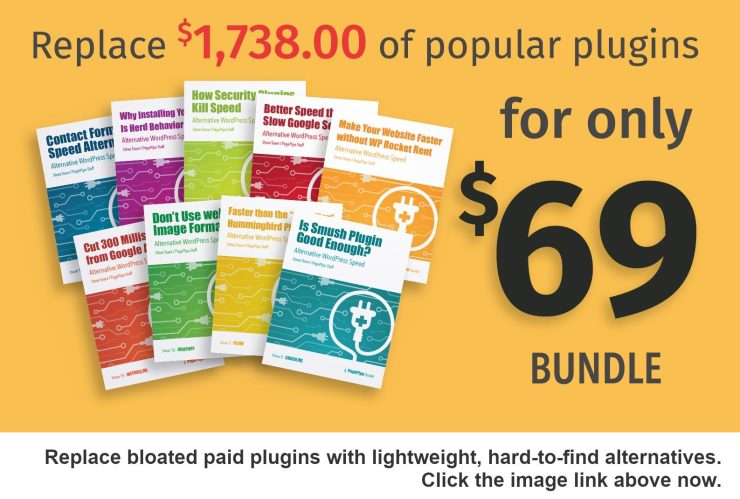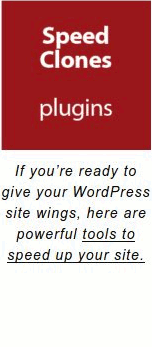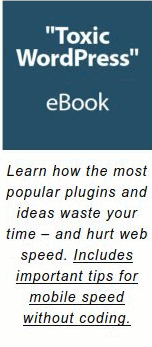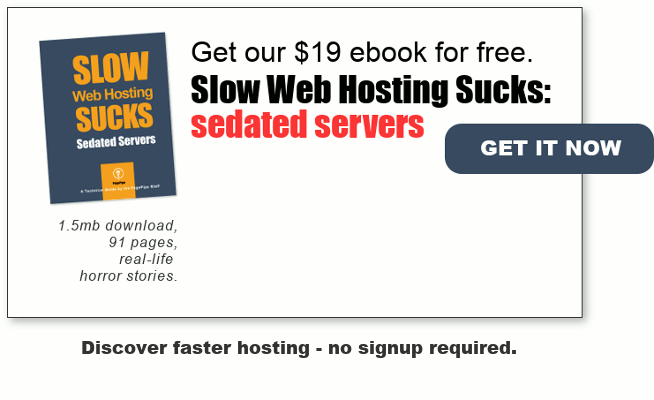Does Ezoic’s Leap System Improve Website Performance? Can it serve website content and display ads within a 2-to-3 second load time? Let’s find out!
Ezoic is an ad network. It serves pay-per-click (PPC) ads to websites. It’s a certified Google publishing partner. PPC is a way for website owners to monetize and earn extra money.
Your website needs a threshold number of page views before acceptance to ad networks. For example, AdThrive is reportedly a good ad network. But you need at least 100,000 page views per month before you are eligible to join their network.
Ezoic has shaken up the PPC industry by removing all caps to traffic. Now, any website can join the network.
Ezoic has gone one step further to attract website owners. They are introducing a new speed optimization system called Leap. This service is free for websites monetizing their site with Ezoic ads. Another bonus is Ezoic services offer free basic unmanaged web hosting.
What is Ezoic’s Leap?
Leap is a website speed optimization toolset. It identifies what may be causing poor site performance. And then delivers technology and information to improve it. Leap toolset replaces Ezoic’s older ‘Site Speed Accelerator’ paid service.
Ezoic’s Leap claims the elimination of many speed optimization plugins, technologies, and analytics. Ezoic’s marketing says you will save money because you won’t need to buy expensive plugins. That’s correct if you buy expensive plugins. We recommend you use only free plugins.
How Does Ezoic’s Leap Work?
To take advantage of Ezoic Leap, you need to integrate your website with Ezoic. You can do this through nameservers, Cloudflare, CNAME, or CDN.
Ezoic works as a proxy, serving much of the website content via a cache. Ezoic lazy loads essential elements for site rendering. And loads non-essential elements in the background.
There can be issues with some hosts. We hosted our test website on GreenGeeks and integrated it through Ezoic’s nameservers.
Unfortunately, this didn’t sit well with GreenGeeks. GreenGeeks’ security system (Imunify360) would not allow pages to load. The security system identified the Ezoic proxy as bot traffic causing origin errors.
The usual solution is to whitelist Ezoic’s IP Addresses with the host’s security system. Unfortunately, GreenGeeks couldn’t accommodate Ezoic’s many IP addresses. The eventual solution was to transfer the site from GreenGeeks to Ezoic’s free web hosting.
Ezoic works with Kinsta, Siteground, Hostinger, A2Hosting, Amazon Lightsail, and Cloudflare.
When integrating your site with Ezoic, you get access to the Leap toolset on the dashboard. shown below.
Google’s ‘Core Web Vitals’ is the focus. They don’t aren’t great for goodcoffeeplace.com our test website.
The dashboard’s right-hand side is a leaderboard. It displays some sites achieving Google’s core web vital parameters. Tabs at the dashboard top lead to other Leap system sections.
Leap scans your site. It then makes recommendations based on comparisons with database information for:
- plugins
- themes
- other technologies (technologies meaning other software used by a website)
The database is from manual checks and data from all Ezoic’s publisher websites. Leap then flags technologies they consider lead to a slow website.
The recommendations for our test site in the next image.
The green shields show the recommendations implemented by Leap. Red and yellow symbols flag technologies Leap considers severe or significant speed impacts. Leap recommends alternatives.
Leap also warns things like:
“29% of domains using this technology perform significantly worse than the average site”
How significant is significantly worse? How good is good enough?
We asked Ezoic about these calculations. Ezoic’s program director replied to our query. These speed metrics are from thousands of websites using the Ezoic ad network.
Ezoic Leap lists 93 alternative technologies in its Technology Library. From A/B software to WordPress Recipe Plugins. Not all alternative technologies are tested with the Leap system.
Ezoic theme recommendations are pure rubbish.
Leap has 62 alternatives for themes
- 17 recommended
- 19 not recommended
- 17 rated as severe
- 3 rated as extreme
- the rest untested
The 17 recommended themes include:
- Foto
- Twenty-twenty
- Twenty-Twenty One
- Acabado (by Income School)
- Zakra
The 19 themes not recommended include:
- GeneratePress
- Kadence
- Hello Elementor
- Blocksy
- Neve
REFERENCE: https://pagepipe.com/wordpress-dream-theme-for-mobile-speed-generatepress-2-0/
REFERENCE: https://pagepipe.com/bimber-theme/
REFERENCE: https://pagepipe.com/podcaster-theme/
The 17 severe themes included:
- Astra
- Ocean WP
- Oshine
- Jannah
- Academica
REFERENCE: https://pagepipe.com/switch-from-divi-theme-to-astra-for-best-speed/
REFERENCE: https://pagepipe.com/extreme-astra-maximum-mobile-benefits-from-free-theme-features/
REFERENCE: https://pagepipe.com/should-i-use-generatepress-or-astra-theme-with-elementor-for-mobile-speed/
Does the Astra theme conflict with the Leap system somehow? We asked Ezoic for clarification. A representative didn’t address the issue with Astra.
The 3 themes rated as extreme by Leap are:
- Divi
- Ultimatum
- Digiqole
REFERENCE: https://pagepipe.com/switch-from-divi-theme-to-astra-for-best-speed/
REFERENCE: https://pagepipe.com/divi-theme-sucks-and-other-popular-paid-themes-are-slow-too/
Ezoic has a reciprocal relationship with Income School, the makers of Abacado theme. This a conflict of interest and taints Ezoic’s recommendations.
Ezoic’s representative denied any financial arrangement exists. The evidence that supports manipulation is https://incomeschool.com/ezoicsignup/ . Income School monetizes with Ezoic ads.
QUOTE
As an [Ezoic] affiliate, you will earn 3% of a publisher’s ‘Ezoic Earnings’ for the lifetime that they use the Ezoic system. You will be credited with a ‘conversion’ immediately when someone starts using Ezoic, and will be able to collect your commission every month indefinitely.
REFERENCE: https://affiliates.ezoic.com/
How can you optimize your site with Leap?
Optimize Ezoic by clicking on the ‘Optimization Settings’ tab. Turn on or off seven main settings:
- CSS. Optimizes the loading of stylesheets and fonts
- Minify. Optimizes code by eliminating unnecessary attributes that are unnecessary to file execution
- Images. Optimizes the loading, serving, and sizing of images.
- Script Execution. Optimizes the loading and execution of scripts and ads
- Static Asset Cache Policy. Caches the static assets across your pages
- Content. Optimizes the loading of iframes
- Pre-Connect. Speed up the delivery of assets requested from other domains
‘Advanced Settings’
For example, advanced settings for Minify include options to minify CSS, JS, or HTML.
Ezoic’s marketing claims website content and ads will then pass all Google core web vitals.
How does Ezoic Leap Measure Site Performance?
Leap uses the data provided by Google’s CrUX report as well as Google Lighthouse in its page speed reports. This is the data used for the Core Web Vitals assessment.
Google’s ‘Core Web Vitals’ are hand-waving. They use insubstantial language to impress or convince.
REFERENCE: https://pagepipe.com/web-panic-about-google-core-web-vitals-baloney/
What is the problem Ezoic Leap is trying to solve?
Advertisements (Ads) slow websites. Poor quality ads, too many ads, and oversized ads all cause a slow-loading website.
Too many bad ads and a slow-loading website lead to a poor user experience. It frustrates your readers.
The Interactive Advertising Bureau (IAB) sets standards for all online ads. For example, the IAB sets the largest threshold of 300 kilobytes for a fixed, 300 x 250 pixels, online, display ad. Host-initiated requests should not exceed ten file requests during the initial file load.
Unfortunately, advertisers tend to ignore these standards.
Ezoic is trying to solve the problems with ads in at least four ways
- Artificial intelligence to serve optimized ads
- Ezoic Cloud CDN
- Caching
- Leap speed optimization toolset
Ezoic is a Cloudflare partner but they use Amazon Cloudfront as its CDN. Ezoic Cloud claims intelligent caching. They say it’s responsible for their “near-instant server response times.”
This sounds like baloney. CDN’s don’t save the day as speed band-aids.
Real-World Results of Ezoic’s Leap System.
We used the homepage of goodcoffeeplace.com to test Ezoic’s Leap system.
We turned on all the main optimization settings and most of the advanced settings. We used Webpagetest.org, Pingdom, and Fast or Slow for synthetic speed measurements. We also used the tried-and-true manual timer method. We tested load times with Chrome browser in Incognito mode.
Webpagetest location was Dulles, VA USA, using Chrome browser with a DSL connection at 1.5 Mbps/384 Kbps 50 ms RTT. With Pingdom, we set the test location to Washington D.C. When we used ‘Fast or Slow’ we used the default settings. That included tests from 18 locations around the world.
We cleared the Ezoic cache and tested the site with Leap enabled and disabled. A second run with the tools was also performed to test the effect of Ezoic’s cache with Leap enabled and disabled.
FCP = First Contentful Paint
LCP = Largest Contentful Paint
CLS = Cumulative Layout Shift
TBT = Total Blocking Time.
A test with Pingdom:
With the cache cleared, 10.5 second load time with Leap enabled (10.39 s with Leap disabled).
A second cached run using Pingdom
load time: 2.7 seconds with Leap enabled (2.37 seconds with Leap disabled).
A test using Fast or Slow:
With the cache cleared: average LCP 2.51 seconds with Leap enabled (4.86 s with Leap disabled).
The calculated average is from 18 locations around the world.
A second run using Fast or Slow:
With the cache operating: average LCP of 0.768 seconds with Leap enabled (1.50 seconds with Leap disabled).
Manual timing
Using a stopwatch and the Chrome Incognito mode on a Mac PowerBook.
With Ezoic’s cache cleared:
6 second load time with Leap enabled (15 second load time with Leap disabled).
A second run with Ezoic’s cache operating:
2 second load time with Leap enabled (3 second load time with Leap disabled).
Does Ezoic’s Leap System Deliver on its Promise?
Ezoic’s Leap promises to deliver content and ads while passing Google’s Web Core Vitals metrics. The promise is only achievable if configuring your website according to their recommendations.
Ezoic manages to serve your content and ads with a 2- to 3-second load time.
Ezoic’s cache seemed to have the greatest effect on site performance. The LCP (LCP for Webpagetest and Fast or Slow. Load time for manual timing) of the site improved about 3x to 4x, with Leap enabled, and the cache operating. The LCP of the site improved about 3 to 6x with Leap disabled, and the cache operating. In contrast, the LCP of the site improved 2x with Leap enabled on a cleared cache. And improved about 1.5 to 2x when the cache was operating.
Enabling Leap decreases site performance when the cache is operating. Some elements of Leap’s toolset need dynamic loading rather than cached.
User Experience
Speed affects user experience. And user experience (UX) reduces bounce rate, improves dwell time, and increases clickthrough.
Ezoic’s Leap system may help serve your content and ads within a 2 to 3 second load time.
You can join Ezoic for free. You don’t need to achieve pageview requirements. The free Leap speed optimization system works, and you get free web hosting.
If you do decide to try Ezoic then you will need to consider the following:
- Choose a host that is compatible with Ezoic’s system or use Ezoic’s free web hosting.
- Be prepared to remove plugins and make changes based on Ezoic’s recommendations.
- You need to keep a vigil on your site for any changes that may affect Ezoic’s system
Google’s Core Web Vitals, with or without Ezoic’s Leap System, will not benefit ranking and SEO. Google admits Web Core Vitals is a tiebreaker when all other ranking signals are equal. More than 200 signals being equal is improbable. These considerations never outgun relevant content and backlinks from authoritative websites.
If you are running Ezoic, you will see speed improvement if:
- You play by their rules
- Use their tools, hosting, and CDN
When humans interact with machines, the expectation is a response in 1 second. The web relaxed that standard to 2-seconds for using heavy CMS systems like WordPress. Does Exoic achieve repeatable 2-second load times in sequential tests? Expect fluctuation to be wild.
The limit of human endurance for waiting for a machine response is 10 seconds. But most of the audience clicks away in 3 to 4 seconds unless the content has insistence value. The content’s perceived quality contains something people will wait to see.
We don’t appreciate the technospeak used in the Ezoic replies. It is pompous marketing hype. It masks flaws. A claim of technical prowess is suspicious technobabble. Overselling creates suspicion. Their offering works because of what they say in these specs. Their speed recommendations are fluffy. That makes credibility low.
Their weird claims against Astra theme show they have never used it. Nor do they understand its true potential for speed. A magician’s sleight-of-hand diversion distracts an audience. The true culprit of bad speed is slow ads served from remote servers.
QUOTE: “Ads are always the worst code on the Internet, and once you include them you can’t really be accountable for performance anymore.” —Matt Mullenweg: WordPress founder
A year from now, Web Core Vitals will be a mere historic look in the rear-view mirror. It is faddish. Fear sells.
Godspeed-
![]()
Steve Teare
performance engineer
April 2025
PagePipe Site Tuning Services for Speed
Instead of band-aid approaches, we drill down to the root cause of your slow site. This is origin optimization. Also known as site tuning. To do this, we analyze site components:
- Hosting
- Theme
- Plugins
- Scripts and third-party services.
- Images and media library.
- We minimize globally loading plugin effects.
Find out more details about Site Tuning – Get Speed!






